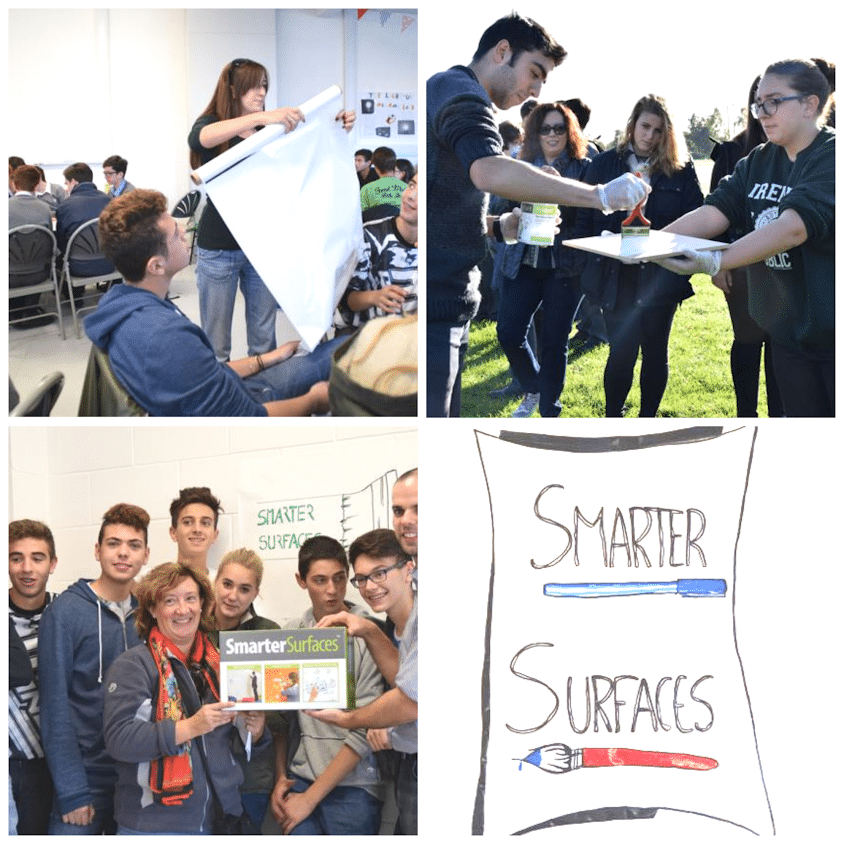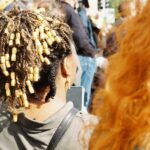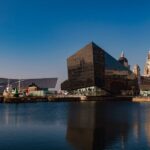Why are schools restoring whiteboards with whiteboard paint?
Whiteboards started replacing blackboards in classrooms in the 1990s owing to health-related concerns – allergies, dry skin, respiratory problems, you name it. Traditional wall-mounted whiteboards have had a good run for almost three decades. Now, the trend has shifted towards writable walls.
For instance, NYC Children, New York- has started replacing whiteboards with whiteboard walls in its facilities to give little children more access. Nevertheless, restoring old whiteboards with whiteboard paint can be a great idea for schools that are not immediately intent on replacing their whiteboards with writable walls. It allows the schools to increase the longevity of whiteboards, reduce waste, and save a lot of money.
5 reasons why schools are using whiteboard paint to restore whiteboards
The use of whiteboard paint to restore or create whiteboard surfaces in schools is a common practice for several reasons:
Cost-Effective
While high-quality whiteboard paint is not particularly cheap, it is much more cost-effective when compared to new wall-mounted whiteboards. Whiteboard paint can be used to restore old whiteboards, transform blackboards into whiteboards, and turn any wall into a dry-erase, writable surface. It allows schools to transform existing surfaces, such as walls or chalkboards, into functional whiteboard spaces without purchasing and installing new boards.
Versatility
Schools can use whiteboard paint to create custom-sized whiteboard spaces. It offers greater flexibility and eliminates the limitations posed by the size of walls and wall-mounted whiteboards. Schools can combine magnetic paint and whiteboard paint to turn regular whiteboards into magnetic ones. They can also apply matt whiteboard paint to create a projectable whiteboard that can be used to project images and videos with a projector while writing or drawing on the board.

Photo Credited to: Smarter Surfaces
Renovation and Recycling
With time, the smooth dry-erase surface of whiteboards gets stains and rough patches. t gets hard to get rid of ink residue, and the writing fades. While using a whiteboard with such issues is extremely difficult, schools can salvage the hardware by applying a coat of whiteboard paint or sticking a self-adhesive whiteboard film to the old board. This is an eco-friendly approach as it reduces waste. And by repurposing old hardware, schools can save a lot of money.
Customization and Integration
Restoring an old whiteboard with whiteboard paint allows schools to get creative with the whiteboard surfaces. They can have whiteboards in any color by applying color to the board first and then applying whiteboard paint or a whiteboard film. This allows the school to create more visually appealing whiteboard surfaces. Colorful whiteboards can appeal to the imaginative faculties of children.
Ease of Installation
Usually, schools buy whiteboards in bulk, so when it’s time to replace one whiteboard, it’s usually time to replace the whole lot. Replacing so many whiteboards requires serious logistic efforts. Whereas, painting old whiteboards with whiteboard paint is a much easier task. This has made the restoration of whiteboard surfaces with paint a practical choice for educators. It offers a solid alternative to new whiteboards for a better educational environment.
The use of whiteboard paint in schools is driven by its cost-effectiveness, versatility, space utilization, recycling potential, customization options, support for collaborative learning, and ease of installation. These factors make it a practical choice for educators and administrators aiming to enhance the learning environment within budget constraints.

Whiteboard Paint Application at St Joseph’s, Secondary School, Drogheda
Photo Credited to: Smarter Surfaces
How to restore and maintain whiteboards with whiteboard paint?
The process of restoring an old whiteboard has two steps.
1. Apply white primer
One may think that priming won’t be necessary since traditional whiteboards are white and smooth by default. However, through years of use, a whiteboard surface gets wear and tear. There could be minute cracks, rough patches, or inconsistencies in smoothness.
If you apply whiteboard paint on an inconsistent surface, the new writable surface will pronounce such inconsistencies. Applying a couple of coats of primer ensures you get a perfectly smooth surface to apply the whiteboard paint.
2. Apply the whiteboard paint
In the case of Smarter Surfaces whiteboard paints, you need to mix two parts to prepare the paint (everything along with the instructions is sent with the product). Once the paint is prepared, you can apply it on small whiteboard sections using a fresh roller.
Once the entire board is painted and no gaps, patches, or inconsistencies are left, allow the whiteboard to dry up for 4 days. After that, you will have a brand new whiteboard.
Maintaining the whiteboard
A high-quality whiteboard paint should rejuvenate an old whiteboard and prepare it for decades of use. You need to use the right kind of dry-erase markers and avoid using permanent markers. Cleaning the whiteboard with a dry-erase cleaner after each session of use enhances its lifespan. Use good quality microfibre cloths to wipe the board.
There is a burgeoning trend of replacing traditional whiteboards with writable walls, and there are many good reasons for that. A writable wall gives children and teachers more surface area, whiteboard paints give you more creative options, and the installation process is simpler. But until your school is ready to adopt writable walls, restoring old whiteboards with whiteboard paint is the next best alternative.
















